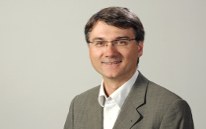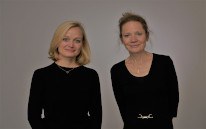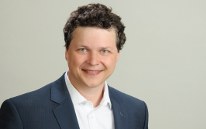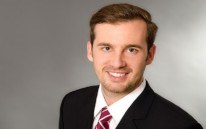Tagliazucchi, E., F. von Wegner, A. Morzelewski, V. Brodbeck and H. Laufs (2012). "Dynamic BOLD functional connectivity in humans and its electrophysiological correlates."
Front. Hum. Neurosci. (2.895) 6: 339.
Our much undersold study showing that dynmic BOLD functional connectivity has electrophysiological (EEG-) correlates and which these are. The proof of concept study justifying the confidence to identify in EEG similar markers of reduced consciousness as we previously identified with fMRI (see the studies listed below).
Tagliazucchi, E., F. von Wegner, A. Morzelewski, V. Brodbeck, S. Borisov, K. Jahnke and H. Laufs (2013). "Large-scale brain functional modularity is reflected in slow electroencephalographic rhythms across the human non-rapid eye movement sleep cycle."
Neuroimage (6.132) 70: 327-339.
Tagliazucchi, E., F. von Wegner, A. Morzelewski, V. Brodbeck, K. Jahnke and H. Laufs (2013). "Breakdown of long-range temporal dependence in default mode and attention networks during deep sleep."
Proc. Natl. Acad. Sci. U. S. A. (9.809) 110(38): 15419-15424.
We show that both the spatial and temporal integration of brain activity are a prerequisite for conscious awareness and measure it spatially as the modularity of a network graph and temporally as long range correlations (Hurst exponent). This is very well in line with a hypothesis brought forward by Tononi and others claiming that consciousness corresponds to a system's capacity to integrate information, which can be measured.
Tagliazucchi, E., D. R. Chialvo, M. Siniatchkin, E. Amico, J. F. Brichant, V. Bonhomme, Q. Noirhomme, H. Laufs and S. Laureys (2016). "Large-scale signatures of unconsciousness are consistent with a departure from critical dynamics."
J. R. Soc. Interface (3.856) 13(114): 20151027.
This article, based on empirical data, provides a theoretical foundation for the quantitative effects observed in various different conditions of reduced consciousness.
Tagliazucchi, E., L. Roseman, M. Kaelen, C. Orban, S. D. Muthukumaraswamy, K. Murphy, H. Laufs, R. Leech, J. McGonigle, N. Crossley, E. Bullmore, T. Williams, M. Bolstridge, A. Feilding, D. J. Nutt and R. Carhart-Harris (2016). "Increased Global Functional Connectivity Correlates with LSD-Induced Ego Dissolution."
Curr. Biol. (9.916) 26(8): 1043-1050.
Here, we extend our observations from states of reduced to such of "enhanced" consciousness and show that the models and theories described above still apply.
Tagliazucchi, E. and H. Laufs (2014). "Decoding wakefulness levels from typical fMRI resting-state data reveals reliable drifts between wakefulness and sleep."
Neuron (15.982) 82(3): 695-708.
In this work, among other things, we show that the brain's functional connectivity changes significantly as a function of sleep stage. Who would not show their publication in Neuron if they had one ;-)
Tagliazucchi, E., M. Behrens and H. Laufs (2013). "Sleep neuroimaging and models of consciousness."
Front Psychol 4: 256.
This review summarizes the concepts detailed in the above studies and in the work of others.











